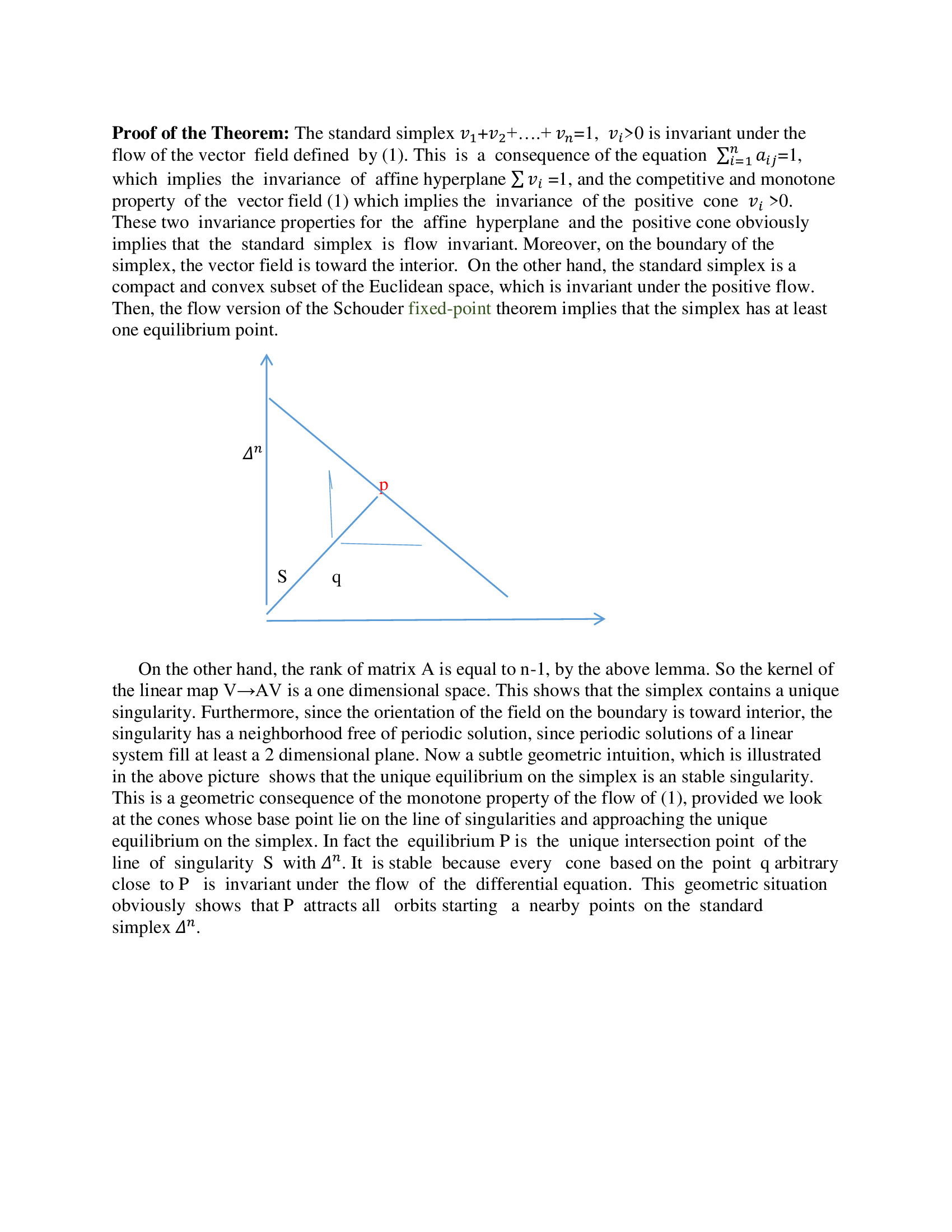Edit: According to the comment by @LSpice we realise the existing link to the main motivation of the question is not available. Then we search for the paper we found the following version:
And this link too:
https://www.researchgate.net/publication/277825529_Models_of_consumer_behaviour#fullTextFileContent
We define $$L_{n}=\{A=(a_{ij})\in M_{n}(\mathbb{R})\mid \sum_{i=1}^{n} a_{ij}=0 \;\;\;\text{for every fixed j}\}$$ This is a Lie subalgebra of $M_{n}(\mathbb{R})$.
A dynamic-geometric proof for this fact is that;
$"$ The affine hyper plane containing the standard simplex $\Delta^{n-1} \subset \mathbb{R}^{n}$ is invariant under the flow of a linear vector field $\dot X =AX,\;\; A\in M_{n}(\mathbb{R})$ if and only if $A\in L_{n}"$. On the other hand the space of all (linear) vector fields tangent to a submanifold (say the affine hyper plane containing $\Delta ^{n-1}$) of any manifold (say $\mathbb{R}^{n}$) is closed under Lie braket.
Is there any name-notation for this particular lie algebra? What is a precise Lie group whose Lie algebra is isomorphic to $L_{n}$? What is the precise description of the image of $L_{n}$ under the exponential map $A \mapsto e^{A}$?
What are some obstructions for embedding of a finite dimensional Lie algebra in some $L_{n}$?
Edited at Nov. 28, 2017, Motivation for consideration of such an $L_n$:
More than two years ago, an economist very kindlyintroduced me this paper Model of consumer behaviour and suggests me to generalize the mathematical part of the paper. My observation was the following fact as generalization of the above paper:
Fact: The linear equation $X'=AX$ has a unique equilibrium on the standard simplex $\Delta^n$ if $A=(a_{ij})$ belongs to $L_n$ and $a_{ij}>0\; \text{for}\; i\neq j$. Moreover the equilibrium is an attractor singularity.
Note: In the linked paper, this fact is proved for $n=2,3$ with quite computational method.
Sketch of Proof for arbitrary $n$: The system is a monoton dynamical system since the off diagonal elements of the jacobian of the vector field is positive.
This implies that $\Delta^{n-1}$ is flow invariant. So the flow version of the Leray Schauder fiexed point theorem implies that the standard simplex has at least one singularity. Now this post implies that the singularity is unique since the matrix $A$ is a matrix of rank $n-1$. To prove that the singularity is attractor we use again the monotone property of the flow as follows.
Note that the flow $\phi_t$ of a monotone dynamical system satisfies $x \leq y \implies \phi_t(x) \leq \phi_t(y)$. The order we are considering is defined as follows:
$$x\leq y \iff x_i \leq y_i,\;\; \forall i$$ where $x_i, y_i,s$ are coordinates of $x,y$, respectively.
Now we prove that the unique singularity of $X'=AX$ in the standard simplex is an attractor singularity provided that $A \in L_n$ and its off diagonal entries are strictly positive.
Let $\ell$ be the one dimensional subspace which determines the kernel of $A$. Then $\ell$ intersect the standard simplex at point $p\in \Delta^{n-1}$. The point $p$ is the unique singularity of the system on the simplex. Lets choose a point $q \in \ell$ where $q$ is near to $p$ and $\sum q_i<1$. We construct a cone with base point $q$. By monotone property of flow we conclude that this cone is flow invariant. If we let $q$ approach to $p$, then we observe that $p$ is an stable singularity. By a simple argument one can shows that the singularity can be approached by a band of closed orbit because the direction field on the boundary of the simplex is toward interior. So the unique singularity is attractor.
The " Monoton dynamical systems" is introduced by Morris W. Hirsch.
Here is a picture for our proof:

